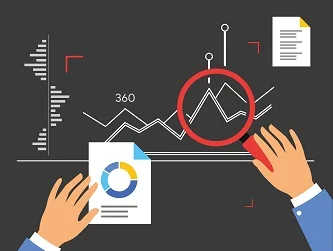AUTHOR : MICKEY JORDAN
DATE : 01/01/2024
In today’s fast-paced digital landscape, where online transactions have become an integral part of our daily lives, the efficiency of payment gateways plays a crucial role. This article dives into the realm of “Payment Gateway Response Rate Optimization in India,” exploring the nuances, challenges, and strategies to enhance the responsiveness of payment systems
Introduction
Payment gateways act as the virtual bridge between merchants and consumers, facilitating secure and swift financial transactions. However, the speed at which these transactions occur, known as the response rate, can significantly impact the user experience and the overall success of the transaction.

Understanding Response Rates
Response rates refer to the time it takes for a payment gateway to process a transaction and provide feedback to both the customer and the merchant. It’s not just about speed; it’s about creating a seamless and reliable payment experience. Factors such as server capacity, network efficiency, and security protocols contribute to the response rate.
Current Scenario in India
India, with its rapidly growing digital economy, has witnessed a surge in online transactions. However, the response rates of payment gateways in the country face unique challenges. From varying internet speeds to diverse user preferences, the landscape demands a tailored approach optimization.
Importance of Optimization
Optimizing response rates is not just a technical concern; it directly influences user satisfaction and transaction success. A slow or unreliable payment process[1] can lead to frustrated customers and abandoned transactions, impacting the revenue stream for businesses.
Strategies for Response Rate Optimization
To tackle the challenges and enhance response[2] rates, businesses need to adopt strategic measures. Streamlining the payment process, improving server capabilities, and addressing security concerns are essential steps toward optimization.
Case Studies
Examining successful cases of response rate optimization[3] in India provides valuable insights. These case studies highlight how businesses, both large and small, have overcome challenges and significantly improved their payment processing efficiency.

Technological Innovations
The integration of artificial intelligence (AI) and machine learning (ML) is proving to be a game-changer in response rate optimization[4]. These technologies can predict user behavior, detect anomalies, and continuously improve the overall payment experience.
User-Friendly Interfaces
The design of the payment interface is a critical factor in optimizing response rates. A user-friendly, intuitive design reduces friction in the payment journey, ensuring a smooth and hassle-free transaction experience for customers.
Best Practices for Merchants
Businesses must adopt best practices to enhance response rates. Tips ranging from optimizing for various devices to ensuring compliance with security standards are crucial for providing a seamless payment experience.
Regulatory Impact
As the regulatory landscape evolves, businesses must stay compliant with local regulations. Adapting to changing legal frameworks ensures the long-term sustainability of payment processes.

Metrics for Measurement
Key performance indicators (KPIs) help businesses measure the effectiveness of their response rate optimization efforts. Analyzing data and interpreting metrics allow for continuous improvement and adjustment of strategies.
Challenges and Solutions
Common obstacles, such as network instability and cybersecurity threats, can hinder response rate optimization. Proactive solutions, including robust security protocols and redundant systems, are essential for overcoming these challenges.
Future Trends
Predicting future trends in response rate optimization involves staying abreast of technological advancements and shifting consumer behaviors. Businesses that adapt to these changes will stay ahead of the curve in providing an efficient payment experience[5].

User Testimonials
Real user experiences post-optimization provide social proof and build trust. Positive feedback and testimonials contribute to the credibility of businesses their commitment to customer satisfaction.
Conclusion
In conclusion, payment gateway response rate optimization in India is a multifaceted challenge that demands attention from businesses seeking success in the digital realm. Prioritizing the user experience, adopting cutting-edge technologies, and staying compliant with regulations are the keys to unlocking a seamless and efficient payment process.
FAQs
- Q: How long does it take to optimize response rates for a payment gateway?
- A: The timeline for optimization varies based on the complexity of the existing system and the strategies implemented. On average, businesses may start seeing improvements within a few weeks.
- Q: Are there any specific regulations in India that businesses should be aware of for response rate optimization?
- Yes, businesses must comply with data protection laws and other regulations governing online transactions in India.
Remaining knowledgeable and adjusting to evolving circumstances is absolutely indispensable.
- Yes, businesses must comply with data protection laws and other regulations governing online transactions in India.
- Q: How can small businesses benefit from response rate optimization?
- Small businesses can enhance customer trust, reduce transaction abandonment, and increase revenue by optimizing response rates, fostering a positive online shopping experience.
- Q: What role does user feedback play in response rate optimization?
- User feedback is invaluable for identifying pain points and areas for improvement. It helps businesses understand the real impact of their optimization efforts on the end-user.
- Q: Are there any risks associated with adopting emerging technologies for response rate optimization?
- While the benefits are significant, businesses should carefully assess potential risks, such as data security concerns, and ensure robust testing before implementing new technologies.

